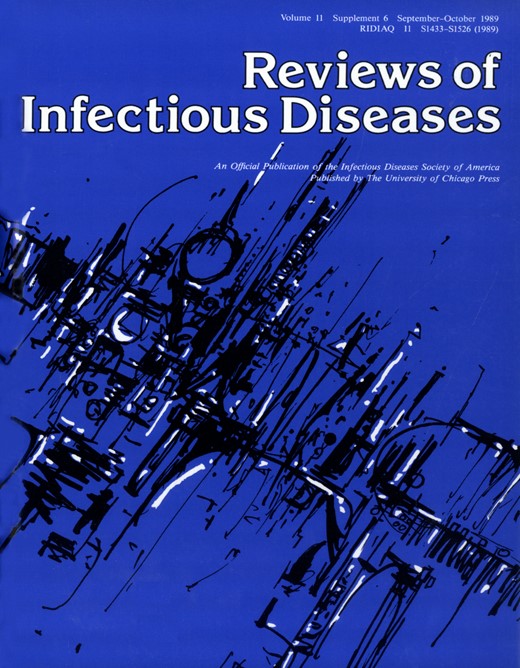-
Views
-
Cite
Cite
Bernard W. Berger, Dermatologic Manifestations of Lyme Disease, Reviews of Infectious Diseases, Volume 11, Issue Supplement_6, September-October 1989, Pages S1475–S1481, https://doi.org/10.1093/clinids/11.Supplement_6.S1475
Close - Share Icon Share
Abstract
Erythema migrans (EM), the distinctive cutaneous lesion of Lymedisease, has a variable clinical appearance, but at some point presents as a centrifugally expanding, usually erythematous, annular patch. Of 237 patients with this condition, 201 (85%) were examined initially from May through September. Thirty-four (14%) remembered having been bitten by a deer tick. The median interval from the bite to the appearance of EM was 9 days (range, 1–36 days). Forty-one (17%) of the patients had multiple EM lesions. Of the 237 patients, 128 (54%) manifested major extracutaneous signs and symptoms. Although EM also has a variable histologic picture, the presence of a deep and superficial perivascular and interstitiallymphohistiocytic infiltrate containing plasma cells is diagnostic. Spirochetes can be demonstrated with Warthin-Starry staining in ∼40% of the biopsy specimens. Concomitant cutaneous lesions appeared on some patients before and during antibiotic therapy. Nine patients with serologic evidence of Borrelia burgdorferi infection had cutaneous lesions other than EM, including granuloma annulare (three), erythema nodosum (two), papular urticaria (two), Henoch-Schonlein-like purpura (one), and morphea (one). Whether these entities are cutaneous markers of Lyme disease or are coincidental findings is yet to be determined.
- lyme disease
- biopsy
- henoch-schoenlein purpura
- erythema chronicum migrans
- erythema nodosum
- granuloma annulare
- plasma cells
- purpura
- localized scleroderma
- skin manifestations
- spirochaetales
- diagnosis
- skin lesion
- antibiotic therapy
- henoch-schoenlein nephritis
- ixodes dammini
- infiltrates
- papular urticaria







Comments